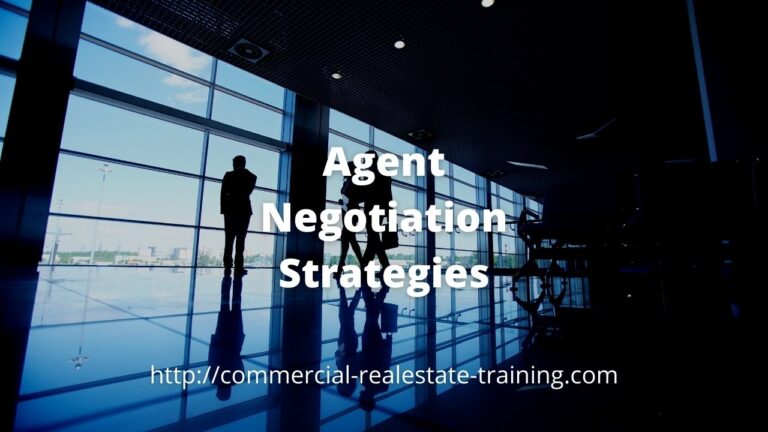Commercial Real Estate Agents – A Brief Summary of How to Track Your Ratios and Results in Sales and Leasing
When you correctly track and measure your sales processes and prospecting activities in commercial real estate, you can see what is happening in the property market. From that information, you can adjust your processes and efforts. The equation is quite simple. So you want to build your market share? Focus on what is happening and then adjust your efforts.
When you think about it, there is a specific sale process that would apply to your property speciality in either office, industrial, or retail property. There will also be some differences between a sales and leasing focus (perhaps you do both).
Tracking Commercial Ratios and Results
Having worked with many commercial real estate teams over the years, I encourage all agents to track and measure their results quite early within the following categories:
- Cold Calls – Understand the number of calls that have been made on a daily and weekly basis. Ideally, you should be looking for sustained improvement in outbound call numbers. Also look for a greater number of inbound calls directly resulting from your cold calling activity. It is quite realistic to attempt to contact approximately 40 people per day through a cold calling process. From that number of outbound calls, you can track the results and how you move to the next stage of contact. That’s where your pipeline of contact becomes very useful.
- Door knocking – It is a good business strategy to door knock approximately 12 businesses per day in the local area. It is preferable that you work to a logical plan such as concentrating on certain streets and certain buildings. You can repeat the door knocking process every 90 days in the areas that have shown you some greater level of interest and opportunity.
- Meetings created – It is a good target to work towards two new business meetings every day with new clients or prospects. If you are regularly prospecting and focusing your efforts in the local area, that meeting target is quite achievable. Regular contact with the same people will help you convert more meetings over time; relevance is the key to converting meetings.
- Listings generated – When you consider the different listing types, you will understand the importance and the differences between open listings and exclusive listings. Focus all of your prospecting efforts on exclusivity and pitch and present your services accordingly. Open listings are a total waste of time and can divert you from good quality listing stock. To be the agent of choice in your local area, your skills, knowledge, and property specialization should be sufficiently high to allow listing conversions exclusively in the least 75% of the presentation is that you make. If you are struggling with that ratio or situation currently, revisit your marketing efforts and the personal strengths that you bring to every client and property listing. How can you stand out as the best agent of choice for the individual property challenge?
- Signboards in the local area – Understand the number of signs that you have placed in the local area on quality property listings. It is worth remembering that the signboards that really matter are those that are placed on exclusive property listings. There is really no point in wasting time and money in placing a generic signboard on a property that is openly listed with many other agents.
- The number of listings in the weekly newspaper – Each week there will be a particular day where commercial property leases and sales feature in the newspaper within your town or city. Take a tally of advertisements by number and also by a brokerage. Understand your percentage or ratio within the total.
- The number of listings that you have online – Most inbound property inquiry today comes from the online portals and the online marketing resources at our disposal. It is worth noting that most property promotional strategies online can be improved through a matrix of social media, blogging, article writing, and a series of different property adverts for the one listing.
- Marketing funds paid – Top agents understand exactly how much money they have been converting in marketing funds per month and per year. Vendor paid marketing funds directly allows the optimization of inbound inquiry for quality listings. It is quite realistic to set a budget of $10,000-$20,000 per month as an advertising budget quotation target per agent within a busy brokerage. Most agents should be able to convert at least 50% of those funds to the marketing of new listings.
- Inquiry rates from marketing and advertising – Make sure you are tracking the level of inbound inquiry coming to you every day. Understand the listings that are attracting the enquiry, and the source of the inquiry. Are you achieving better levels of activity from certain portals, websites, social media, or newspapers? You will also get a degree of enquiry from the signboards in the local area. Understand what is working from a marketing perspective and start to focus your campaigns towards those things.
- Inspections on your listings – It directly follows that inbound inquiry rates will convert to inspections. An inspection should only occur if a buyer or tenant has been completely qualified. Understand just how many of your inbound inquiries are converting to inspections so you can see what property types are attracting the most enquiry currently. As a special note, remember that poor quality properties (or those that are incorrectly marketed or overpriced will attract little genuine enquiry). Don’t make mistakes with your property choices or client listings.
- Offers presented – Most top agents would expect to negotiate and present at least one offer per week. The size and type of the deal will then have a direct reflection on the commission end result. If you work backwards from that assumption you can see how property quality and location will impact enquiry and negotiation momentum. To do well in commercial real estate today, it follows that you should focus all your client and prospecting efforts on quality listings and property types.
- Closed deals – Closing a sale or lease transaction is a process from the ‘offer’ stage. Expect to close on at least 75% of your offers successfully. To improve the ratio practice your dialogues and negotiation skills.
- Time on market – During the year the time on market averages for sales and leasing listings will change. Sometimes that change is due to seasonal festivities, and at other times business sentiment. Look for the pressures of change and determine the best time of year to take any property to the market. The first 4 weeks of any campaign are really important so don’t waste them because of poor promotional planning.
- Database growth – It is always good to track database changes and growth. That is especially the case if you prospect for new clients every day. Break your database down into separate categories of leads, suspects, prospects, hot prospects, clients, and VIP clients. You can handle each group differently when it comes to ongoing contact and marketing.
You may not have the time or the resources to cover every category mentioned in the list. That being said, there are probably three or four categories that you can easily track and monitor. Small improvements and results identified will help you move ahead into your property market with greater relevance and commission opportunity.
When you can see things happening and small successes being created, it is a lot easier to build even further personal momentum on the things that really produce relevant results for you as an agent and for your brokerage.







